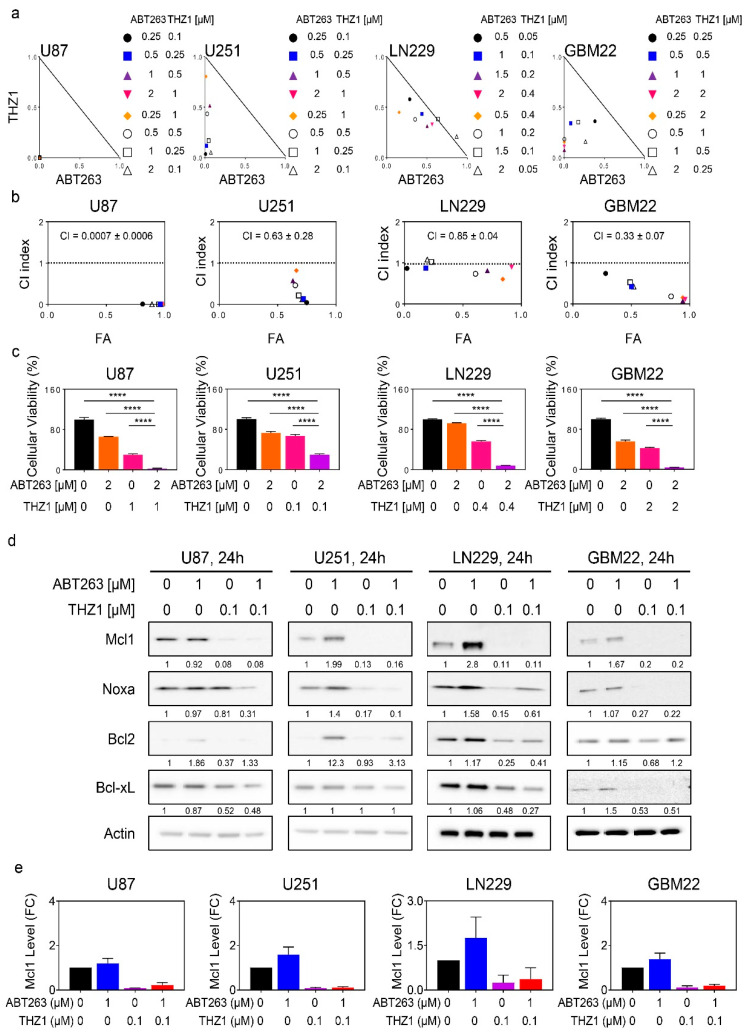Figure 3.
THZ1 and BH3-mimetics act synergistically to reduce the viability of glioblastoma model systems in vitro. (a) Cellular viability data of U87, U251, LN229, and GBM22 cells treated with ABT263, THZ1 or the combination of both. Isobolograms are shown; (b) Combination index (CI) value of samples treated in (a). CI value < 1: synergistic, CI value = 1: additive, and CI > 1: antagonistic. The dotted line represents additivity (CI value = 1). FA: fraction affected; (c) The graphs show cellular viability data of U87, U251, LN229, and GBM22 cells treated with ABT263, THZ1, or a combination of both (n = 4). ANOVA was used for statistical analysis; (d) Standard western blots of cell lysates of U87, U251, LN229, and GBM22 cells treated with ABT263, THZ1, or the combination of both for 24 h. Actin is used as a loading control. The protein expression levels of Mcl1, Noxa, Bcl2, and Bcl-xL were quantified by using ImageJ (shown in cursive font). Uncropped blots are shown in Figure S10; (e) The protein expression level of Mcl1 treated with ABT263, THZ1, or the combination of both for 24 h in U87, U251, LN229, and GBM22 cells. FC: fold change. Shown are means and SD (n = 2–3). ****p < 0.001.

